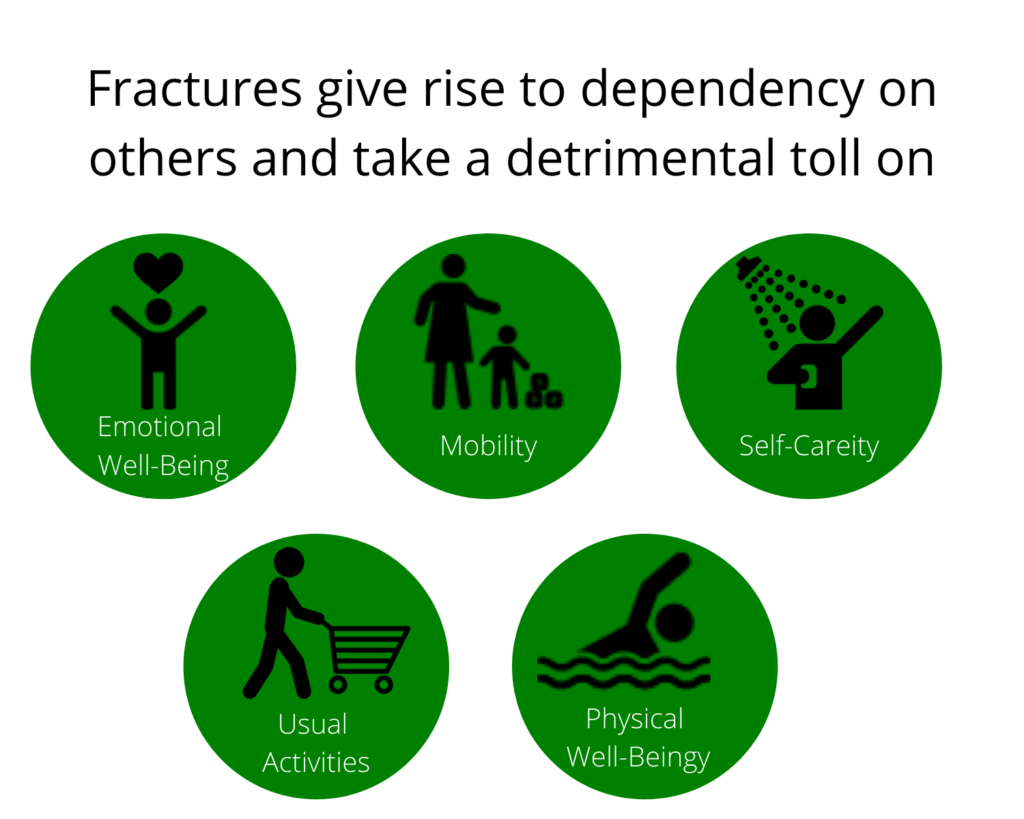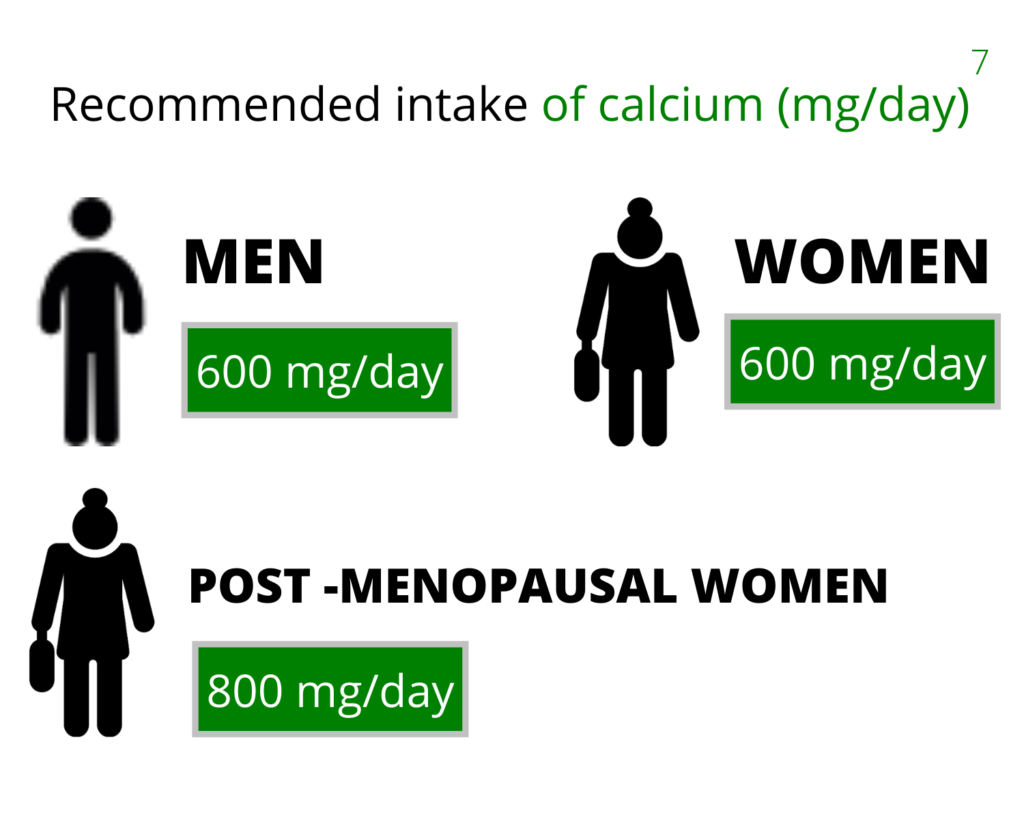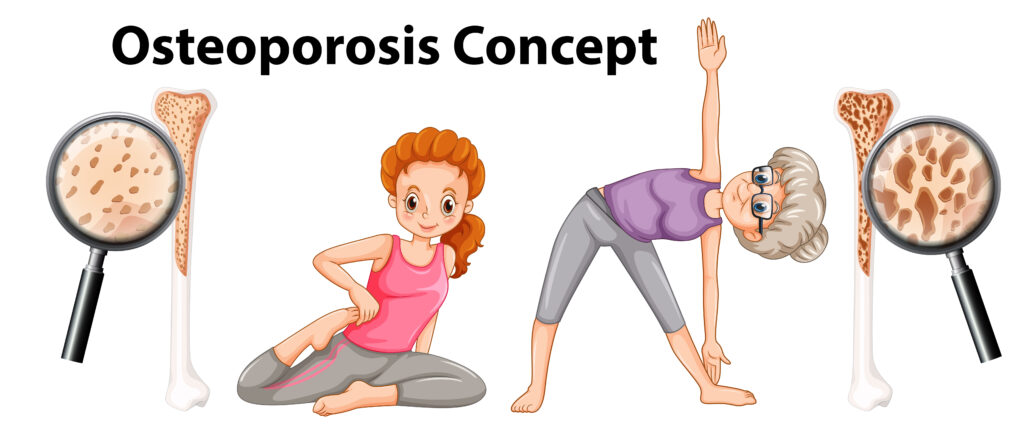Osteoporosis is a disease in which the density and quality of bone are reduced, leading to weakness of the bone and increased risk of fracture, particularly of the spine, wrist, hip, pelvis, and tower arm. Osteoporosis and associated fractures can have serious health repercussions often resulting in pain, long-term disability, and loss of independence, leading to early mortality and morbidity.

Your bones are the framework of your life.
Your bones support your body and give it structure. They protect your internal organs. They help you stand, sit, and walk. In fact, they are essential to every move you make, big or small. That’s why taking care of your bones should be a priority.
What osteoporosis does to the bone.
It’s important to know what osteoporosis is doing to the bone so you can take proper steps to reduce the risk of a possible fracture in the future. When bones are affected by osteoporosis, the honeycomb spaces within the bone become much bigger, making the bones less dense, weaker, and susceptible to breaking.
Once a patient suffers an osteoporosis-related fracture, his or her risk of a future fracture increases up to 10×3.
25% risk of death.
Around 25% of patients who sustain a hip fracture die within a year, and less than half of those who survive to regain their previous level of function.
79% impact on quality of life.
79% of patients have experienced a great impact on their quality of life due to their fracture.
74 % future fracture risk.
74% of patients are worried or very worried about breaking another bone.

Eat smart. Stay active.
Calcium, vitamin D, and exercise are all vital to keeping bones strong. Start right to help reduce the risk of a fracture.
Why calcium?
Calcium is a major component of your bones. It helps keep them strong and dense, which can help you to stay active. Calcium is also needed for nerve function and muscle movement. When the body does not get enough calcium, it will take calcium from your bones, making the bones weak.
About vitamin D.
Your body needs vitamin D to absorb calcium. Without vitamin D, bones lose mass and weaken. Vitamin D helps muscle performance and balance, which in turn help reduce the risk of falling (a major cause of osteoporosis-related fractures). That’s why vitamin D is important for the bones. There are small amounts of vitamin D in few foods like fatty fish, egg yolks, fortified milk, orange juice, and fortified cereals.

Exercise. It helps more than you know.
Believe it or not, weight-bearing exercise and muscle-strengthening exercise can help build bone density. Other types of exercise, such as balance and posture exercises, can help decrease the risk of falls and broken bones. So how much do you need?
According to the National Osteoporosis Foundation, you should aim for 30 minutes of weight-bearing exercise on most days, and do muscle-strengthening exercises 2 to 3 times a week. Weight-bearing activities may include dancing, fast-walking, low-impact aerobics, and playing tennis. Muscle-strengthening exercises can be done with free weights, weight machines, or elastic exercise bands.’
Are you at risk of breaking a bone?
Having post-menopausal osteoporosis puts you at a greater risk of breaking a bone. That’s why it’s important to partner with your doctor to learn as much as you can and commit to a plan of action.
According to the National Osteoporosis Foundation, these are some factors that can contribute to postmenopausal osteoporosis and risk for fracture.
Uncontrollable Risk Factors:
- Being over age 50 years.
- Being female.
- Menopause.
- Family history of osteoporosis.
- Low body-weight/being small and thin.
- Broken bones or height loss.
Controllable Risk Factors:
- Not getting enough calcium and vitamin D.
- Not eating enough fruits and vegetables.
- Getting too much protein, sodium, and caffeine.
- Having an inactive lifestyle.
- Smoking.
- Drinking too much alcohol.
- Losing weight.
The earlier the diagnosis, the better.
75% of patient
who have been diagnosed with osteoporosis early agree that it was key in preventing another fracture.
80% of patients
who have been diagnosed with osteoporosis late wish they had been diagnosed earlier.
Preventing falls: Outdoor safety tips:
Wear low-heeled shoes with rubber soles for more solid footing (traction), and wear warm boots in winter.
Use hand rails as you go up and down steps and on escalators.
If sidewalks look slippery, walk on the grass for more solid footing.
Look carefully at floor surfaces in public buildings. Floors made of highly polished marble or tiles can be very slippery. When these surfaces are wet, they may become dangerous.
Turn on the light outside your front door before leaving your home in the early evening so that you have outdoor light when you return after dark.
Use a shoulder bag or a backpack purse to leave your hands free.
Consider wearing hip protectors or hip pads for added protection.
Preventing falls: Indoor safety tips.
Around the house.
- Place items you use most often within easy reach.
- Use assistive devices like pushcarts, long-handled grasping devices to help avoid strain or injury.
Floors
- Keep floors free of clutter.
Bathrooms
- Install grab bars on the bathroom walls beside the tub, shower, and toilet.
- Use a non-skid rubber mat in the shower or tub.
Kitchen
- Use non-skid mats or rugs on the floor near the stove and sink.
- Clean up spills soon as they happen (in the kitchen and anywhere in the home)
Stairs
- Keep stairwells well tit, with light switches at the top and the bottom
- Install sturdy handrails on both sides.
Bedroom
- Place light switches within reach of your bed and a night light between the bedroom & bathroom.
- Keep a flashlight with fresh batteries beside your bed.
Things to remember.
Take your medications for osteoporosis regularly, as advised by your doctor.
Do not forget to take your calcium and vitamin D supplements, as advised by your doctor. Take calcium and vitamin D rich foods.
Do simple, regular, suitable weight-bearing and muscle-strengthening exercises only as advised by your doctor.
Follow up regularly with your doctor for a review of your health status.

